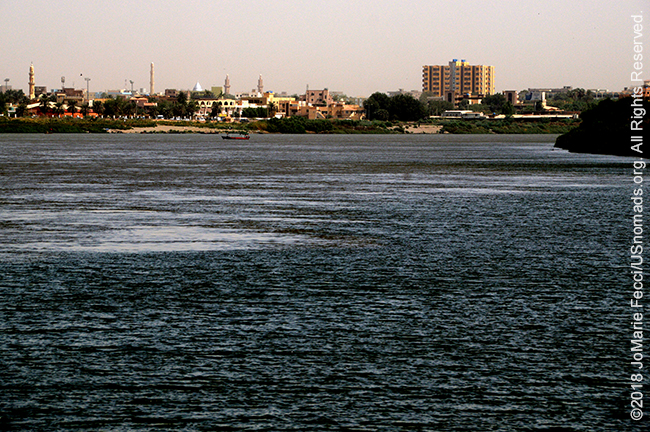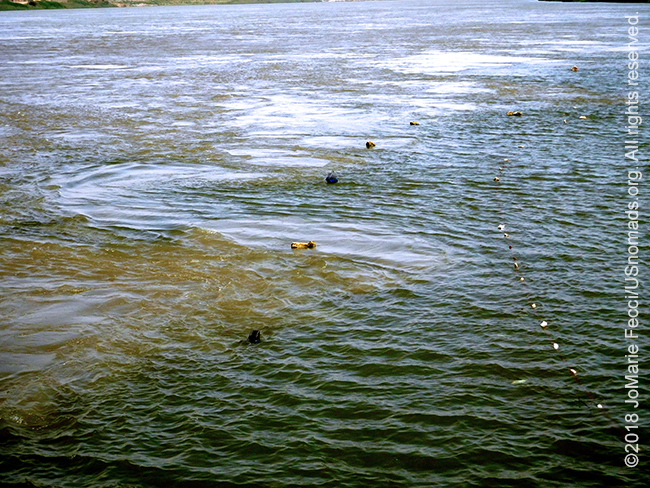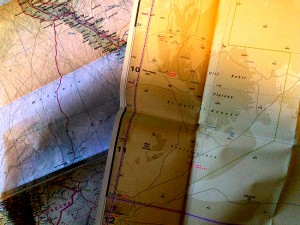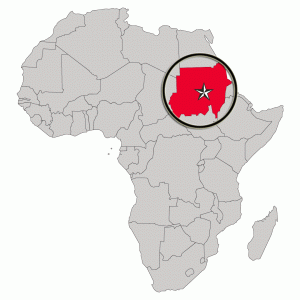
KHARTOUM, SUDAN (4 April 2018) — My introduction to Khartoum began with a geography lesson about the city itself. The river Nile is the center of the universe. Well, not really, but in this part of the Sahara, the Nile has been the center of civilization since the beginning of recorded time. People lived by its life-giving waters and built their civilizations around it. Sudan, like Egypt, has ancient roots. And the modern city of Khartoum has grown up and spread out, but the Nile remains the center separating the metropolitan area into three main sections: Khartoum, Khartoum North and Omdurman.
Khartoum is the administrative downtown with the main government buildings, the university and all that, while Omdurman is the old center with its big sprawling market and Khartoum North is the industrial area as well as the location of some of the more residential neighborhoods. Bridges link the three.
I liked the idea of starting my exploration at the place where the Niles meet, known as Al-Mogran, the confluence of the Nile. To get to the exact spot, we had to drive though some kind of park and walk beyond the fence line to a sort of pointy tip of unkempt land covered by tall-ish weeds. There was a well trodden dirt path right up to the water’s edge, and looking out from there I could actually SEE the “line” where the White Nile and Blue Nile meet and mingle before joining to form a single mighty river Nile. Each Nile really does have a distinctive color and there is a clear visual “seam.”
Some men were fishing nearby, but otherwise there was really no one around. From here I could see the modern city and its bridges above me, while the timelessness of the river’s world continued below. It was as if the modern city was too busy to pay attention to its ancient roots, and yet the eternal river didn’t care, it just keeps on flowing, its life-giving waters still supporting so many of the people who live around it. It is a strange contrast or combination, but I think it may define a lot of what I will see during my journey in Sudan …

ABOUT THE EXPEDITION

JoMarie Fecci, of USnomads, sets off on an independent scouting trip across Egypt and Sudan in preparation for an up-coming Sahara expedition. Driving locally-sourced Toyotas and working with small local teams in each region, she will traverse a winding route that jumps off from key points along the Nile as far south as Khartoum, where the Blue and White Niles meet. During the journey she will visit a series of UNESCO world heritage sites focused on the ancient civilizations that occupied the region and meet with local communities. The primary goal of this mission is to assess terrain, security, driving conditions, logistical concerns and approximate timeframes for future travel.
WHERE WE ARE

The Sudan in Northeast Africa is bordered by Egypt to the north, the Red Sea, Eritrea and Ethiopia to the east, South Sudan to the south, the Central African Republic to the southwest, Chad to the west and Libya to the northwest. The country has a total area of 1.861.484 square kilometres (718.722 square miles), making it the third largest in Africa. The terrain is generally flat plains, broken by several mountain ranges. In the west the Deriba Caldera (3,042 m or 9,980 ft), located in the Marrah Mountains, is the highest point in Sudan. In the east are the Red Sea Hills. The name Sudan derives from the Arabic “bilād as-sūdān” or “the lands of the Blacks.” The population of roughly 37 million people is made up of 597 different ethnic or tribal groups speaking over 400 different languages and dialects. Sudanese Arabs are by far the largest ethnic group, estimated to account for 70% of the population. They are almost entirely Muslims. The majority speak Sudanese Arabic, with some different Arabic dialects, while many Arabized and indigenous tribes like the Fur, Zaghawa, Borgo, Masalit and some Baggara ethnic groups, speak Chadian Arabic. The nation’s official languages are Arabic and English. Sudanese history goes back to Antiquity, when the Meroitic-speaking Kingdom of Kush controlled northern and central Sudan and, for nearly a century, Egypt.